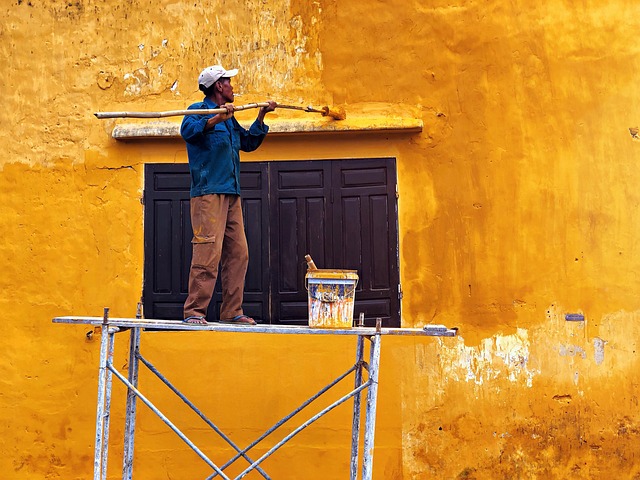Safety Protocols for On-Roof Inspections and Work
On-roof chimney inspections combine fall-risk management with detailed assessment of masonry, flue integrity, flashing, and ventilation. This summary highlights the planning and equipment considerations professionals and informed homeowners should confirm before accessing a roof, so inspections and maintenance proceed with clear safety priorities and minimized hazards.

On-roof inspections should begin with a firm plan that addresses access, fall protection, and the specific hazards associated with chimneys and hearth systems. Confirm weather conditions, utility locations, and roof surface stability before placing ladders or scaffolding. Workers should understand how masonry deterioration, a compromised flue liner, or heavy creosote deposits can increase the danger of collapse, fire, or toxic smoke exposure. Use a written checklist and communicate roles so everyone knows where anchors, tools, and emergency gear are located during the task.
Masonry checks for structural safety
Assess masonry visually and by sound before committing weight to the chimney or adjacent roof areas. Tap bricks and mortar joints with a small hammer to locate hollow or delaminated sections, and note patches of efflorescence or frost damage that suggest moisture penetration. Avoid standing directly on parapets or corbels that show movement; instead, position platforms or use scaffolding tied to solid structural members. When planning restoration, consider how mortar composition and brick replacement will affect long-term stability and compatibility with the existing chimney mass.
Flue, liner, and ventilation assessment
A safe on-roof inspection includes evaluation of the flue path and the liner condition. Cracked or missing liners allow excessive heat transfer to surrounding masonry and framing, increasing fire risk. Use visual inspection and borescopes where appropriate to look for cracks, dislocation, or evidence of animals and debris blocking the flue. Confirm that termination caps, bird guards, and draft-enhancing elements are intact and that ventilation pathways are unobstructed so combustion gases will exit as intended rather than backdrafting toward living spaces.
Managing creosote, soot, and hearth risks
Creosote and heavy soot present both fire and respiratory hazards during inspection and cleaning. Work with controlled removal techniques: use HEPA-filtered vacuums and containment tarps to reduce airborne particulate. Respiratory protection rated for fine particulates and proper eye protection are essential, especially when disturbing deposits. Inspect the smoke chamber and hearth connections for geometry that traps soot and encourages creosote build-up, and plan cleaning frequency based on use and fuel type to reduce the need for intensive on-roof cleanup that increases exposure time and risk.
Crown, flashing, and waterproofing procedures
Examine the chimney crown, mortar cap, and flashing carefully for cracks, spalled areas, or gaps where water can enter. Water infiltration weakens mortar, accelerates freeze-thaw damage, and can rot roof decking below, creating hidden collapse hazards. When making repairs on the roof, use fall-arrest systems and avoid stepping on visibly soft or wet sheathing. Temporary waterproofing can protect interiors during staged repair work, but permanent solutions that match roofing and masonry materials are necessary to prevent recurrent damage and to maintain flashing integrity over time.
Inspection, maintenance, and restoration protocols
Create a documented inspection program that records masonry condition, flue integrity, liner status, draft performance, and waterproofing observations. Prioritize immediate hazards—loose masonry, exposed combustible contacts, or severe flashing failures—and schedule comprehensive restoration with qualified local services when structural stabilization or liner replacement is required. Ensure permits and scaffolding plans are in place for larger jobs. Maintain an equipment log for anchors, harnesses, and ladders to confirm all elements meet safety standards before use.
Draft control, ventilation, and safe work practices
Draft and ventilation influence both appliance safety and conditions for on-roof work. Verify that chimney height, cap design, and nearby roof features support a consistent draft, and check for signs of downdrafts or recirculation that could push smoke toward roof workers or into living spaces when systems are tested. Adopt conservative safety practices on the roof: use certified harnesses tied to rated anchors, wear non-slip footwear, limit work duration near soot and creosote, and employ a two-person minimum for most chores. Maintain clear communication and emergency response protocols in case conditions deteriorate.
Conclusion
A systematic approach to on-roof inspections and work reduces risks associated with masonry failure, compromised liners, creosote accumulation, and water intrusion. Combining careful pre-inspection planning, appropriate personal protective equipment, diligent documentation, and coordination with qualified local services helps ensure that inspection, maintenance, and restoration are completed safely and effectively, protecting both workers and the building fabric.






